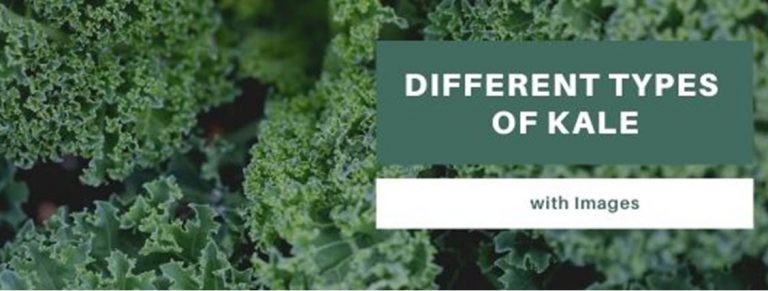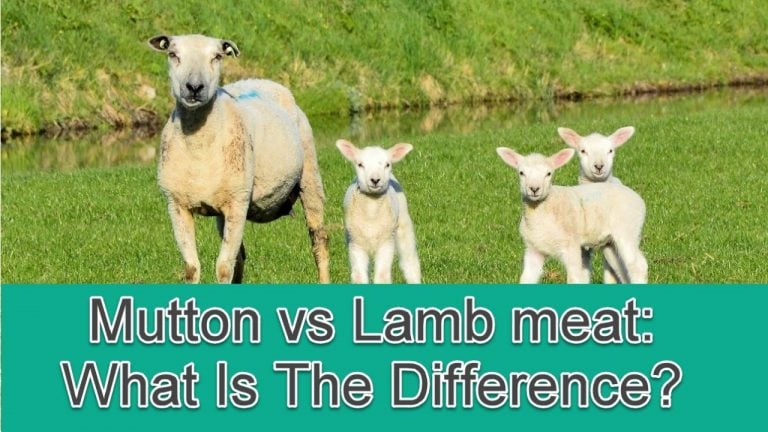19 Different Types Of Steak With Images

Steak comes on different texture, sizes and cuts. It can also be cooked in different ways according to one’s preferences of the stages of steak doneness. The different types of steak also has its own distinct flavor as well as its textures. Before you plan on cooking steak, you need to familiarize yourself to the different types of steak and how each steak is best used for in culinary. Read on below for more details.
Before we proceed with the different types of steak, let us first go through the different stages of steak doneness that you need to be familiar with. The thickness and the characteristics of a steak depends on how it is cut and the quality of the meat.

Stages of Steak Doneness
A meat thermometer is usually used when measuring the internal temperature of the steak.
Rare
Characterized as bright red color on its center and seared on the outside. It is rarely requested as it is nearly raw, despite it being cooked a little. Steak temperature for Rare steak is between 125–130 °F.
Medium Rare
Medium Rare is considered to be the perfect stage of steak doneness. Characterized as reddish with a hint of pink on the center. It is usually seared on the outside. More firmer than rare steak. Cook Steak Temperature is between 130–140 °F.
Medium Steak
For larger groups of individuals, medium steak is the preferred stage of doneness. With steak cooked as Medium steak, there will still be hints of pink on the center of the steak but the brownness of the meat is more emphasized. Cook Steak Temperature is between 140 to 150 F.
Medium Well Steak
If you do not want the center of the meat of your steak with more pink, this level of doneness is your choice. Although there will still be a hint of pink on the center but the meat is more browned. Cook Steak Temperature is between 150–155 °F.
Steak Well Done
With well done stage of steak doneness, it may seem easy to cook at this stage but most chefs consider this stage as the hardest. The center will no longer be pink, nor there will be hints of pink and the meat will be even firmer. If you want a well done steak, make sure to cook it low and slow. Cook Steak Temperature is 160 °F and higher.
Now that we’ve covered the different stages of steak doneness, let us go through the different types of steak.
Types Of Steak
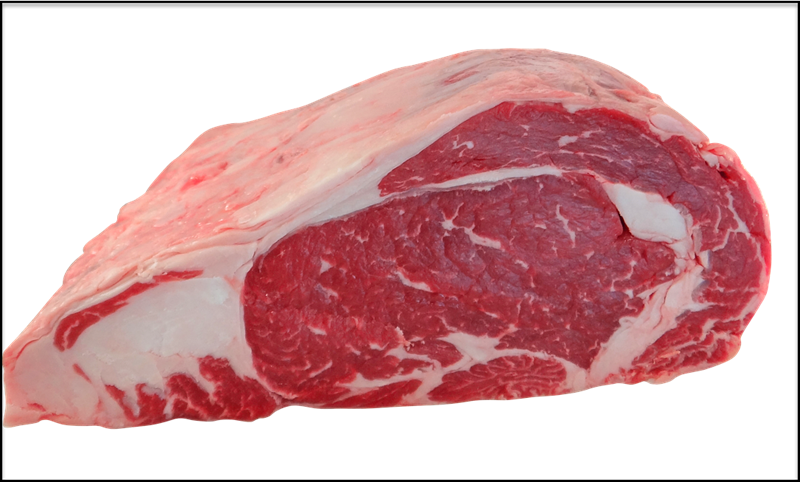
Ribeye Steak
What a better way to start with the types of steak is by giving you the most popular steak in the world, the Ribeye steak. From the name itself, ribeye steak is taken from the rib or hip bone up to the shoulder blade of the cow animal. It is often called in different names such as Delmonico steak, beauty steak, or even scotch Fillet.
Ribeye steak can either have a bone or can also be boneless rib steak, depends on how you want your ribeye steak to be. The famous among the other types of steak simply because it is the juiciest and the most marbled steak than the rest thereby the fattiest too. Flavorful and juicy, that’s what ribeye steak is known for.
When cooking ribeye steaks, there is no need for you to marinate the meat because of its high fat content. You can simply seasoned the meat with salt and pepper. Most of the time, ribeye steaks are cooked grilled and others used a cast iron skillet or a pan.
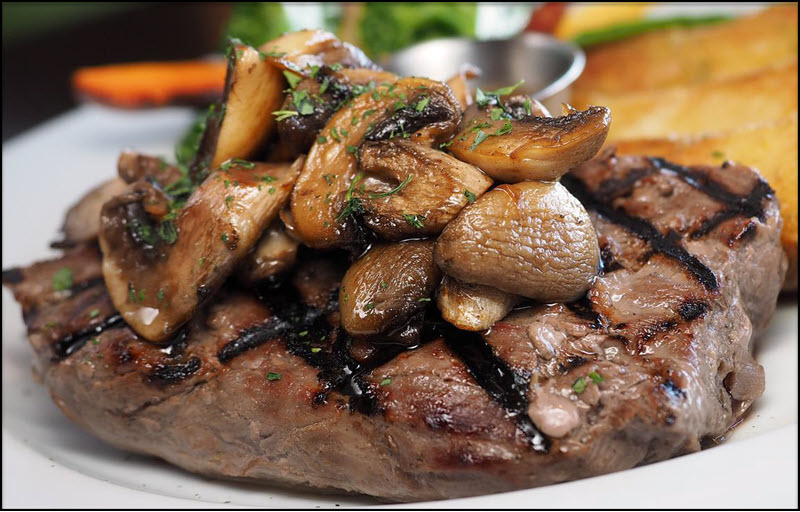
Tenderloin Steak
Tenderloin steak is also known as Filet Mignon, the names can be used interchangeably so if you happen to see on the menu Filet Mignon it is the same as Tenderloin steak. But do not confused the two terms Filet Mignon and Beef tenderloin as the former refers to it as the steak, while the latter refers to the whole roast of boneless steak.
This type of steak is a cut from the end portion of the cow’s tenderloin. The area best for cutting Filet mignon is where there is less exercise on the animal, therefore there is less connective tissues on the cut making it the most tender steak among the other types of steak. Since it is the most tender, Filet mignon is also the most expensive types of steak.
When cooking Filet mignon, you do not need to overcook it since it does not contain fat doing so will only dry out the meat and it will no longer be juicy. Seasoning Filet mignon with salt and pepper will do just fine, with additional herbs of choice. Using a cast iron skillet for cooking until the rare or medium rare of doneness is reached.
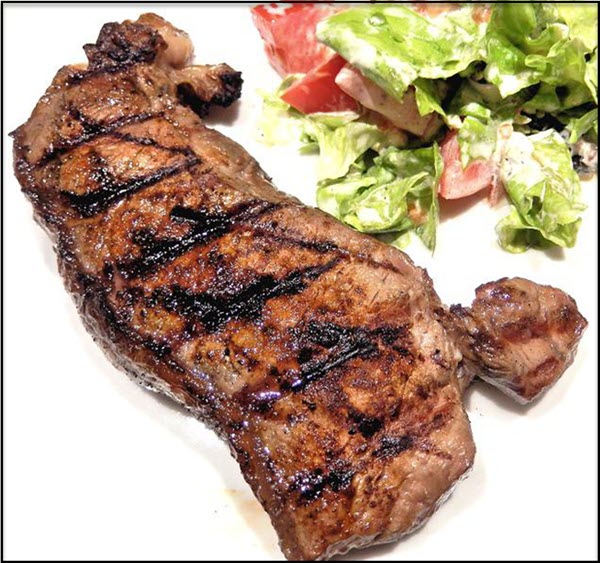
Strip Steaks
Strip Steak is also known as New York Strip steak for boneless steak (most requested type) and Kansas city strip Steak for bone-in steak (bone attached to the strip). This is another type of steak that is a cut from the short loin of the cow. Although a fattier cut of meat, but less fattier than ribeye steaks but has more flavor than Tenderloin steak and moderate marbling.
When cooking strip steak, you no longer have to marinate it you can simply panfry, broiling or grill it over high heat temperature. And since strip steak has lower fat content, it is best cooked on rare stage of doneness that will result to a a softer and chewy texture.
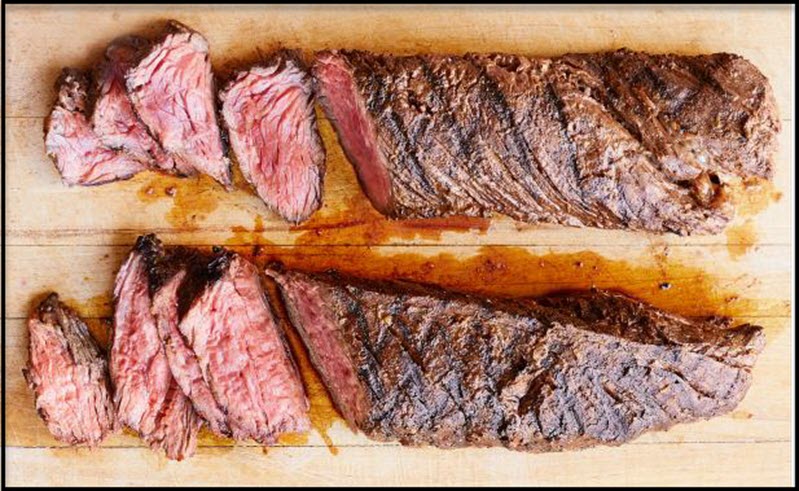
Hanger steak
The hanger steak may not be as famous as the tenderloin steak or the ribeye steak but it is considered to be the favorite amongst the chef simply it is flavorful. It is a type of Flat steak similar to flank and skirt steak, but this one is more tender.
The cut is taken in between the rib and loin of the cow animal, it actually hangs in between the parts hence the name “hanger” steak. Basically, the cut part hangs from the cow’s diaphragm.
Before cooking the meat for hanger steak, it is recommended to marinade it first with wine and Vinegar. Citrus juice is added to help enhance its flavor and will help it to be more tender. Cook the marinated meat either pan fry or grilled over high temperature for a short period of time.
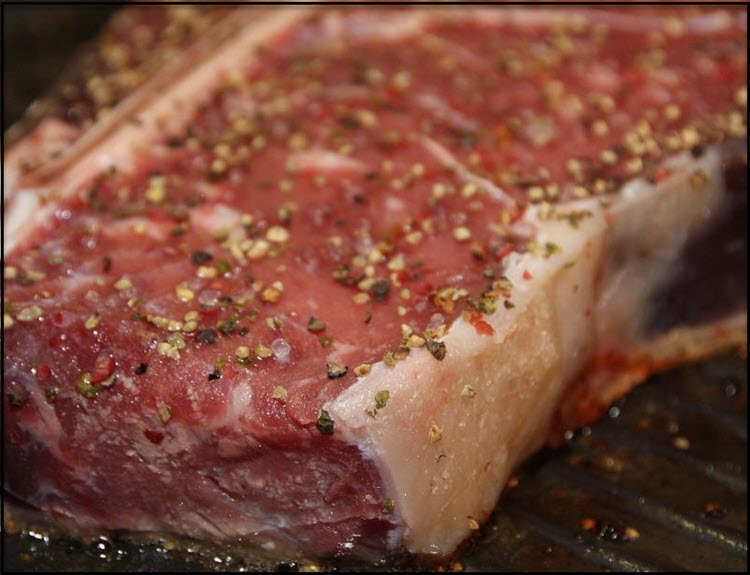
Porterhouse Steak/ T-Bone Steaks
Both the Porterhouse steak and T-Bone steak is considered to be the highest quality of steak because it is flavorful and super tender.
This type of steak contains two steaks in a single cut. Generally, Porterhouse steaks are just a thicker version of the T-bone steak. Both are cuts from the front of the short loin, one side of the bone which is the strip loin while the other side of the bone is tenderloin.
These two types of steak have different fat content that is why it is hard to cook as compared to other steaks. When cooking Porterhouse steak, consider cooking like that of how you would cook a strip steak. And since the tenderloin cut usually cooks a lot faster than the strip loin, tenderloin part should be placed away from the source of heat to avoid overcooking it.
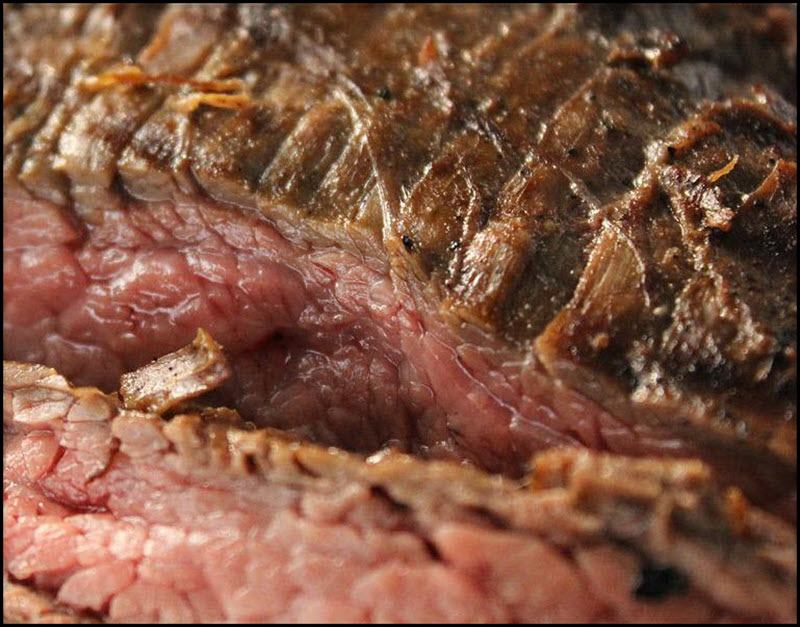
Flank Steak
Flank steak is similar to Skirt steak. Flank steaks are thin but large cut taken from the belly of the steer. Although not a tender cut, but neither a tough cut either. Though you can always marinate the meat to help become tender to bring out its flavor, marinade mixture includes soy sauce, garlic and honey.
When you cook Flank Steak, after marinating the steak, cook over high heat. Cooking over medium will result to a tough steak. Best cooked as medium rare doneness.

Skirt Steak
Skirt Steak is another type of steak. It is a long and thin cut from the diaphragm muscles of the cow.
Since Skirt steak contains more connective tissue it is a tough cut therefore it is recommended to marinade the cut first before cooking skirt steak to help tenderize the meat. When cooking marinated meat, make sure to sear it on high heat but be extra careful as to avoid the center portion of the meat to be on a well-done stage of doneness. Just enough medium rare to medium steak doneness.
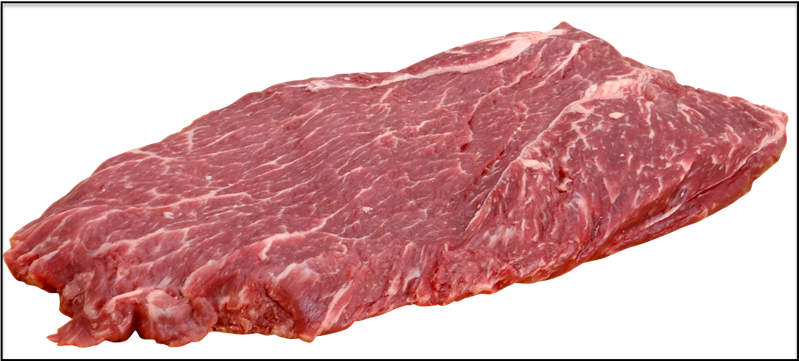
Flat Iron Steak
Flat Iron Steak is also known as the Butler’s steak or often called as Oyster blade and Boneless Top chuck steak. Considered to be a budget friendly type of steak. The cut for Flat iron steak comes from the cow’s shoulders, a part where it is not worked a lot therefore not as tough but tender. When it comes to the level of tenderness, it usually comes after the tenderness of filet mignon steak.
Flat Iron steak is best used for in making steak salads. The cooking method of Flat iron steak is similar to that of Filet Mignon over grilled or hot pan for it to achieved its medium rare temperature.
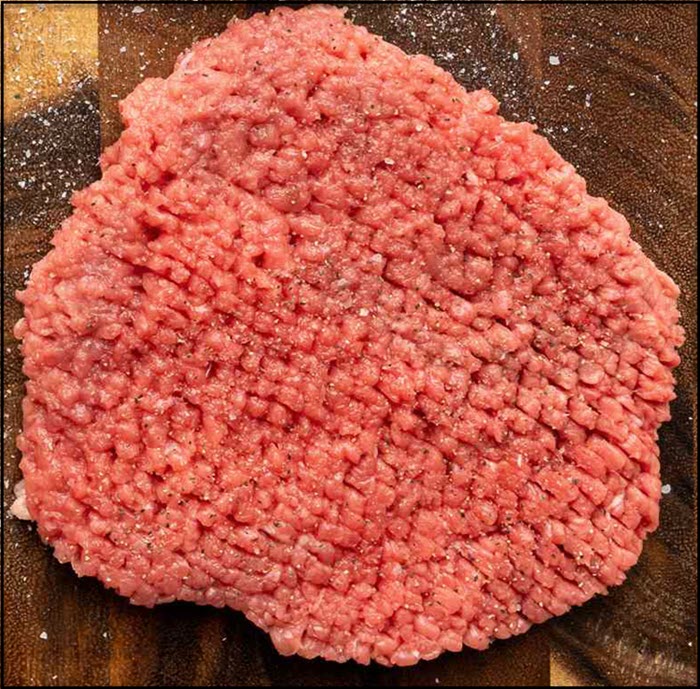
Cube Steak
This is a unique type of steak, not your usual steak since the meat for cube steak goes through a mechanical tenderizer resulting to a cube steak that looks like ground beef.
Cube steak is taken from the top sirloin of the cow or its top round where there is lesser fat content in comparison to other steak.
Cube steak is best used for in making chicken fried steak and stews.

Short Ribs
Short ribs are cut on the brisket, chuck, plate or the rib area of the cow. Most of the time, short rib cut contains rib bone with meat. How thick you want your short ribs to be depends on own’s preferences or the butcher’s preferences.
There are two types of short ribs that are most common: English a parallel cut of at least 6 inches in length and the Flank wherein the bone is cut to make at least 1 to 2 inches in length.
Short ribs are often marbled similar to ribeye steak. When cooking, you can either braise or grill short ribs over moderate heat to achieved a medium-rare doneness. Salt and pepper are usually used to seasoned the steak.
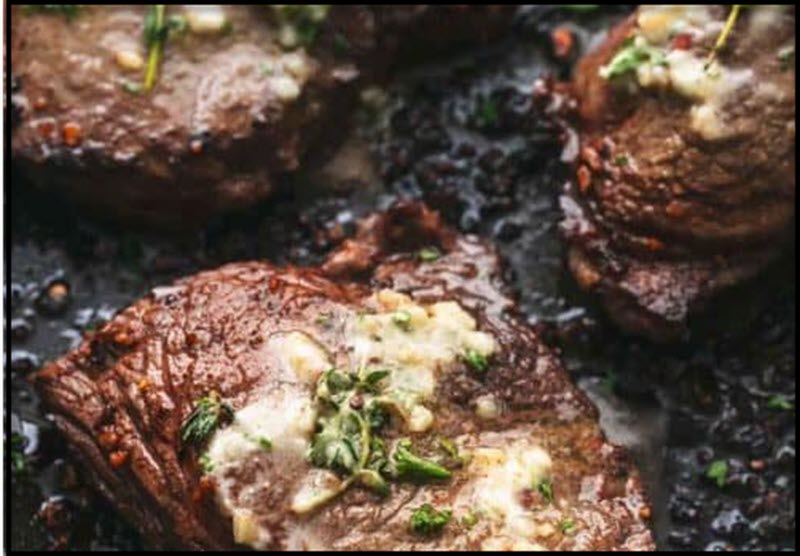
Sirloin Steak
Sirloin Steaks are not only very popular but the most common cut of steaks, aside from being one of the most affordable boneless steak.
There are two types of Sirloin steaks: Top Sirloin and Bottom Sirloin. The former type is the best cut and is more leaner and most common type (best for grilling) while the latter is more tougher and larger cut (best for roasts and stews).
Sirloin Steaks is best for grilling on high heat but be careful not to overcook the steak as it will become tough and dry (over 145 F). Best paired it with bright chimichurri sauce when eating it.
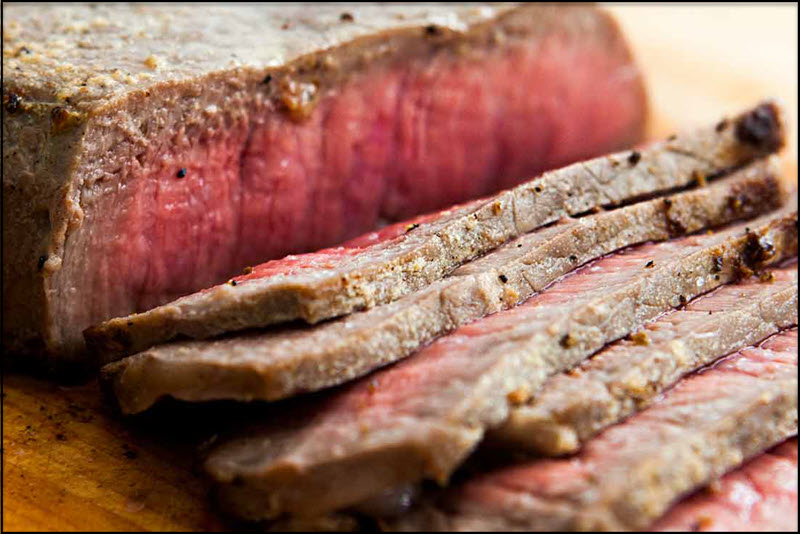
London Broil Steak
London Broil is actually a method of cooking, not exactly a cut of a part of the beef. Although there are some supermarkets that actually use this name to refer to it when selling steaks.
London broil steak is a steak cut taken from the hindquarters of the beef, it can often be confused with flank steak.
When cooking this type of steak, it is recommended to marinate the meat first for a few hours. This will help soften tough muscles resulting to a tender steak. After marinating, you can either hot pan or grill the meat. To avoid the steak from being tough and chewy, medium rare to medium range of doneness is recommended. Before cooked steak is served, it is usually sliced across or diagonally on its grain.
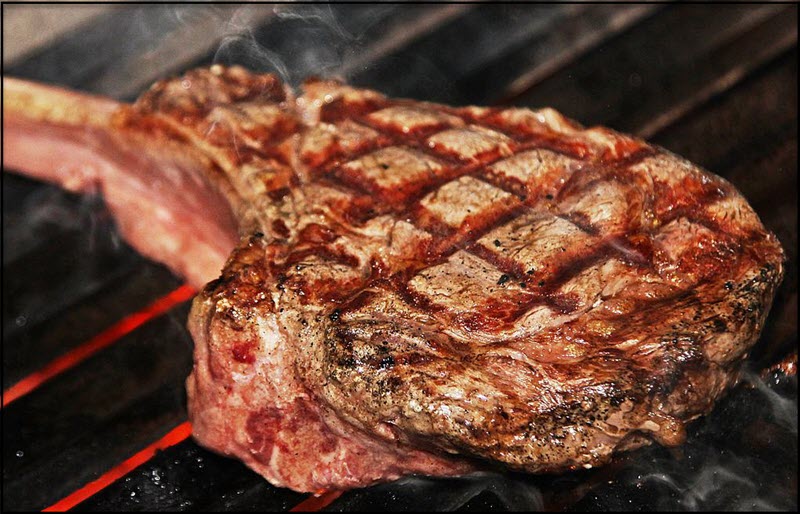
Tomahawk Steak
Tomahawk steak is sometimes called cowboy steak or bone-in rib eye. It is a cut of ribeye beef wherein the rib bone is still attached which is about 5 inches long, can be used to handle and hold the steak.
Tomahawk steak is often confused with Ribeye steak though the main difference between the 2 steaks is how each of the steaks are presented. Also, tomahawk cut is at least 2 inches thick. Since this type of steak is larger and thick enough, it can be shared with at least 3 or 4 people in a single meal.
Tomahawk steak is marbled and with a juicy texture since the part of the cow where the cut is taken is considered to be the softest part.
Because it is thick and due to its size, the cooking method is usually searing on a cast iron pan or on the grill.
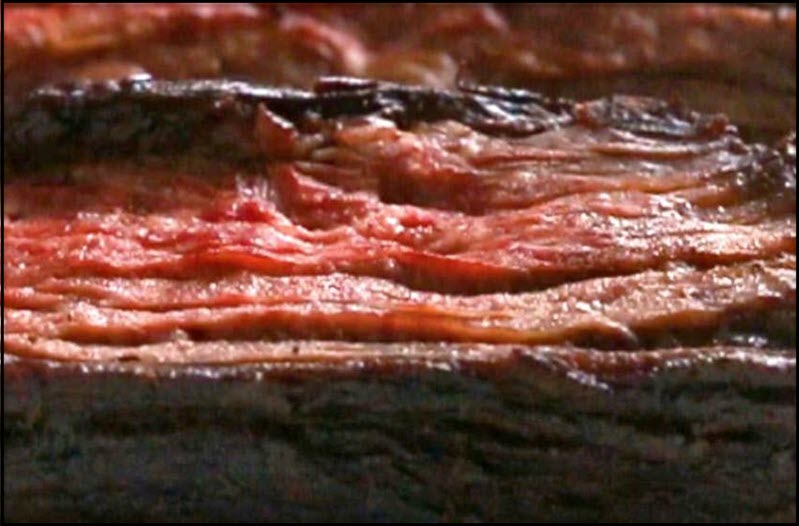
Flap Steak
Flap Steak is a cut taken from the bottom part sirloin of a cow. A budget friendly yet versatile type of steak.
Versatile steak that can be used in several recipes that requires either a skirt or flank steak. Best for grilling over medium to high heat to achieved it tenderness, though make sure to marinade it first. After it is done cooking, it is usually sliced thinly before serving.
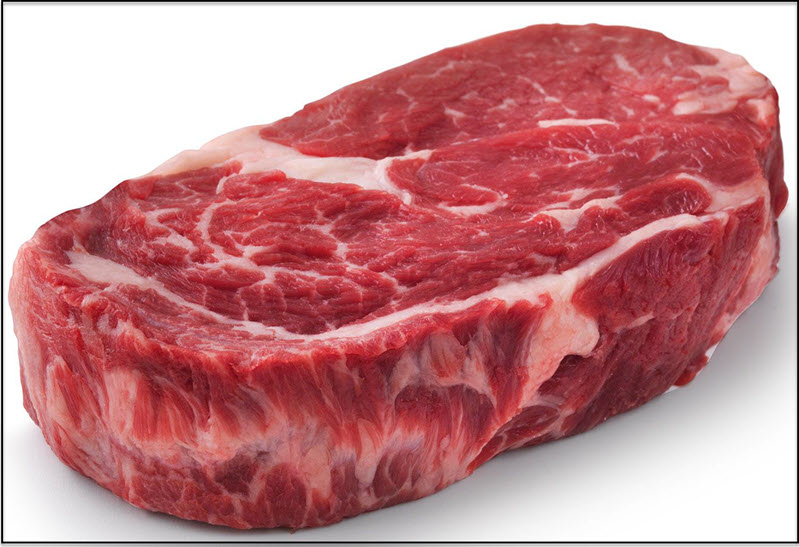
Chuck Eye Steak
Chuck eye steak is also called Poor man’s rib eye because it is a cheap and affordable type of steak. It is a cut from the cow’s upper shoulder that comes from the primal section of the chuck located at the 5th rice. It is similar to rib eye steak. And since only two chuck eye steaks will be available in a cow, these steak is rarely available for purchase.
Cooking Chuck eye steak is similar to cooking rib eye steak though you may want to limit the doneness of the steak to medium. For the steak to be tender, you may also want to marinade it first before cooking.
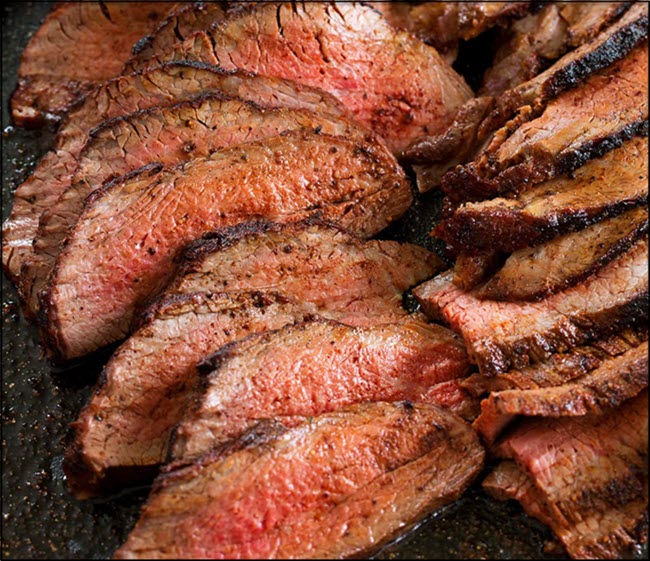
Tri Tip Steak
Tri Tip steak is also called Bottom sirloin steak, Santa Maria steak or Triangle steak. A boneless cut of sirloin steak that is about 3/4 inches to 2 inches thick. The cut is taken from the bottom sirloin, that is next to the flank.
Tri Tip is considered to be a budget friendly type of steak even though it has the same quality as that of the Ribeye steak. It has a significantly rich beef and soft flavor that you will surely love and enjoy eating.
Since Tri tip steak does not contain fat, it is best when cooked over high heat. Cooking methods includes grilling, broiling and or pan searing the steak using either a carbon steel pan or cast iron pan.
Medium rare to medium is the suggested stage of doneness, however if you prefer well done make sure to marinate the steak first for a few hours to prepare it before you cook the steak.
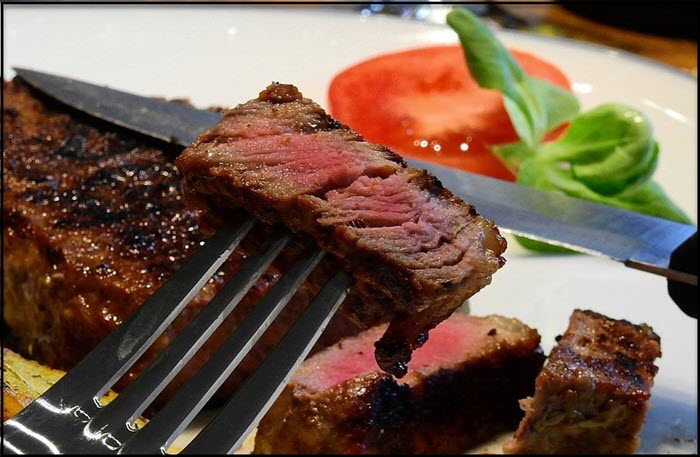
Rump Steak
Rump Steaks are also called round steak and sometimes called Butt steak. It is a beef cut that comes from the round primal part of the beef where the back leg is located. If you are looking for an affordable Ribeye substitute, Rump steak is the perfect choice.
Since rump steak is a lean steak and tough (part where it is often used for movement), it is best to marinade the steak first for 4-5 hours before cooking rump steak. You can either pan fry, or broil rump steak for that mouthwatering delicious steak.
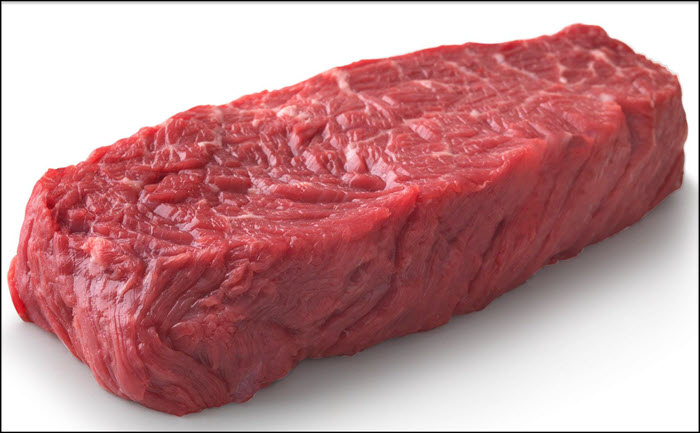
Denver Steak
The steak cut used for making Denver steak comes from the eye of the chuck that is taken from the cow’s front shoulder. Though most of the meat cuts from the same area are tougher, Denver steak tends to be tender because it is where the smaller part is taken and is rarely used for movement.
Denver steak is a boneless steaks best served as medium rare. The meat is usually cooked over high heat then reverse-searing for best result.
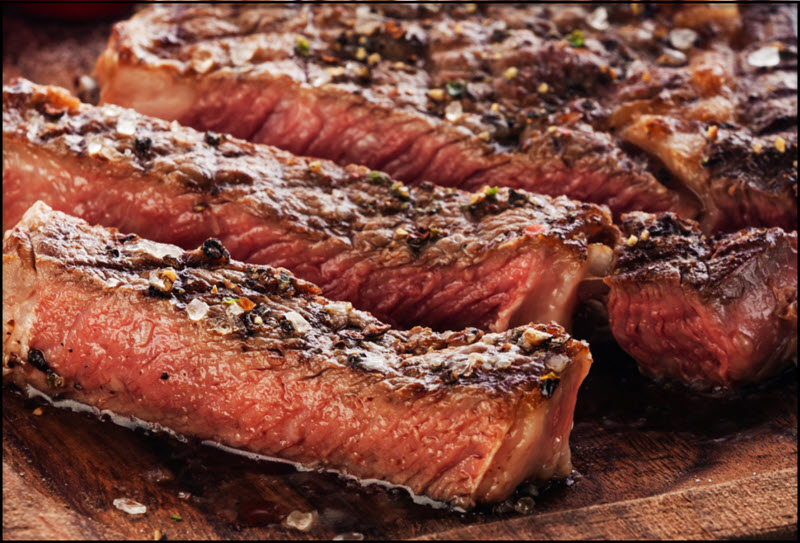
Coulette Steak
The cut for making coulette steak comes from the same muscle as that of Picanha, a Brazilian Churrascaria steak taken from the top sirloin of the cow. Despite the cut being thin and skinny, it is still tender and delicious as well.
USDA’s Beef Grades
When you say best steak is generally refers to a steak that is tender, juicy and well marbled rather than dry, tough and chewy. The main component of the steak that add to its flavor is the fat content of the steak. To better understand how a steak is graded based on how juicy, how tender and flavorful the steak is, one should be familiar with beef grades that will be mentioned below:
- Prime Grade: the beef that comes that a young cow that is well fed with generous marbling. Restaurants and hotels usually use this type of beef grades.
- Choice Grade: there is less or low marbling but still of high quality. Supermarkets and grocery store usually sells this type of beef grades.
- Select grade: more leaner as compared to other higher beef grades.
Frequently Asked Questions
When referring to the best type of steak, it actually depends on how you use the cut of beef to make the steak. Sirloins are best for grilling, skirt steaks best use for Fajitas while tomahawk or porterhouse steaks are for large batch of people.
Top sirloin is by far the best cut of steak that you can use for the grilling cooking method.
The most expensive cut of steak is the Filet Mignon as it is the most tender among all the other cuts of steak available in the market today.
But if you include the size, two other expensive steaks includes Porterhouse steaks and Tomahawk steaks.
